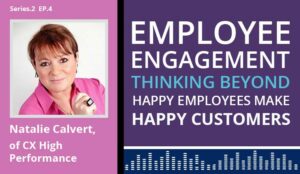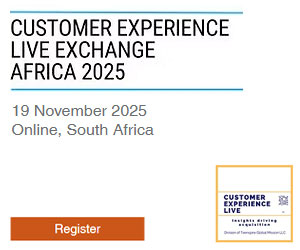Charles Watson of Injixo discusses the link between employee engagement and workforce management (WFM) and how they complement one another.
Employee engagement is not usually associated with workforce management. A WFM team sets the rules for scheduling and the Average Handle Time (AHT) targets, and is usually responsible to call attention to schedule adherence and other real-time infractions.
So, from a certain perspective, it may appear that workforce management tends to be at odds with employee engagement.
But what if I told you it doesn’t have to be that way?
I’ve seen contact centres using workforce management as an incredible tool to support employee engagement… and not at the expense of everything else a WFM team does, but supporting their objectives as well.
According to a recent Gallup poll: “The bulk of employees worldwide — 63% — are ‘not engaged’, meaning they lack motivation and are less likely to invest discretionary effort in organisational goals or outcomes. And 24% are ‘actively disengaged’, indicating they are unhappy and unproductive at work and liable to spread negativity to co-workers. In rough numbers, this translates into 900 million not engaged and 340 million actively disengaged workers around the globe.”
The following infographic further illustrates the importance and benefits of an engaged workforce in the contact centre.
Benefits of Employee Engagement in Contact Centres
Employee engagement reduces attrition
When people are more engaged, they are less likely to leave an organisation. Highly engaged employees enjoy their work, find it meaningful, and enjoy the experience. This means they are less likely to actively look for other opportunities and are less open to being recruited by friends and others who work at another contact centre.
Keeping attrition low makes your job easier.
High attrition increases cost and effort
High attrition rates make planning more challenging because you have to continue to factor in learning curves for new employees.
You also have to be able to forecast when the attrition will happen, and plan hiring to accommodate, which makes the business more expensive to run. There are also costs to recruiting, hiring and training new employees. Trust me, high attrition is painful in so many ways.
An engaged workforce positively affects customer satisfaction scores
Customers are the lifeblood of any business. Just like engaged employees tend to stay, satisfied customers tend to stay as well. There is a lot that goes in to your customer satisfaction scores. In the contact centre industry, you’ll see a few drivers always pop near the top. Those are First Call Resolution (FCR) and Agent Satisfaction.
FCR means customers got their core question answered on the first call. While FCR can be impacted by several factors (call routing, agent training, etc…), an agent taking ownership of the issue is a sign of engagement.
Disengaged employees don’t take this ownership. It’s a transaction and they just want to get the customer off the phone and move on to the next transaction. Engaged employees own the experience and deliver value to the customer.
Agent satisfaction is the customer’s feedback on the actual performance of the employee. So while they may not have liked the policy, did they feel the person who took the call did a good job in providing valuable customer service?
When I went through call centre training over 20 years ago, I can still remember my trainer saying “People can hear you smile on the other end of the phone”.
I’ve found that to be true.
As a call centre agent, I did much worse on my customer satisfaction scores when I wasn’t feeling well or was just not liking my job. It’s not easy taking customer service calls for 8 or more hours a day and maintaining a positive and friendly tone every day!
So knowing how we benefit from employee engagement in the contact centre, what can we do about it in workforce management? Here are just two simple tactics.
Two Simple Tactics to Improve Employee Engagement
1. Measure forecast accuracy and invest in making it better
When you have high levels of forecasting accuracy, it allows better planning. This results in a better alignment of staff required to staff scheduled and makes the agent workload more consistent.
Inconsistency in workload for employees hurts overall motivation and engagement. When they get slammed with volume on a Monday morning because of understaffing, it causes stress.
And when they then sit available on a Wednesday afternoon because that time period is overstaffed, they get bored. Neither of these extremes is good, but it’s even worse when you have periods of both because it gives the impression the company can’t plan. Agents start to have negative feelings toward your business.
2. Engage your employees by involving them in the scheduling process
Generally, scheduling seems like a one-way activity. Workforce management determines what schedules are needed, and then they are either assigned to the employees or they are distributed through a shift bid.
But what if you took a different approach?
I did an experiment where I brought call centre agents in for a discussion when it was time for a shift bid. The business chose Customer Satisfaction as the ranking criteria, so we scheduled them for the discussions in that order.
One by one they came in and we showed them the over/under reports so they could see where we were overstaffed and understaffed each day of the week and each interval of the day. We asked what changes they wanted to make.
After talking through the impacts of the change, and in many cases, negotiating, the changes were made if the business could support it.
We leveraged our workforce management system to produce the reports, and after we made several changes, we updated the system and refreshed our over/under views.
I know it sounds like a recipe for disaster, but I believe if you share the information objectively, instead of having a system blindly make decisions, you can have real conversations with your employees.
As a result of the process, the agents became more educated on what goes into the scheduling decisions and were more empathetic to what workforce management does.
The workforce management team can also built stronger relationships with the agents and show them that they are not just numbers on a spreadsheet. Ultimately, the vast majority of schedule changes can be accommodated. And for those that can’t, we can still increase awareness and eventually reshape the network with new hires.
More importantly, your employees knew why the WFM team couldn’t make a desired change. It was a human experience that helped us earn a lot of goodwill within the company.
As you think about what you do, take a moment to look at it through the lens of a contact centre agent. It doesn’t have to be “them or us” when looking at how the WFM team designs and executes workforce management processes.
You can differentiate yourself and your team by taking an employee-centric view of what you do.
With all the value workforce management already brings to contact centre operations, just imagine if you could also drive employee engagement and customer satisfaction with some simple tweaks in the process.
Author: Robyn Coppell
Published On: 23rd Apr 2018 - Last modified: 12th Aug 2025
Read more about - Guest Blogs, Peopleware






































